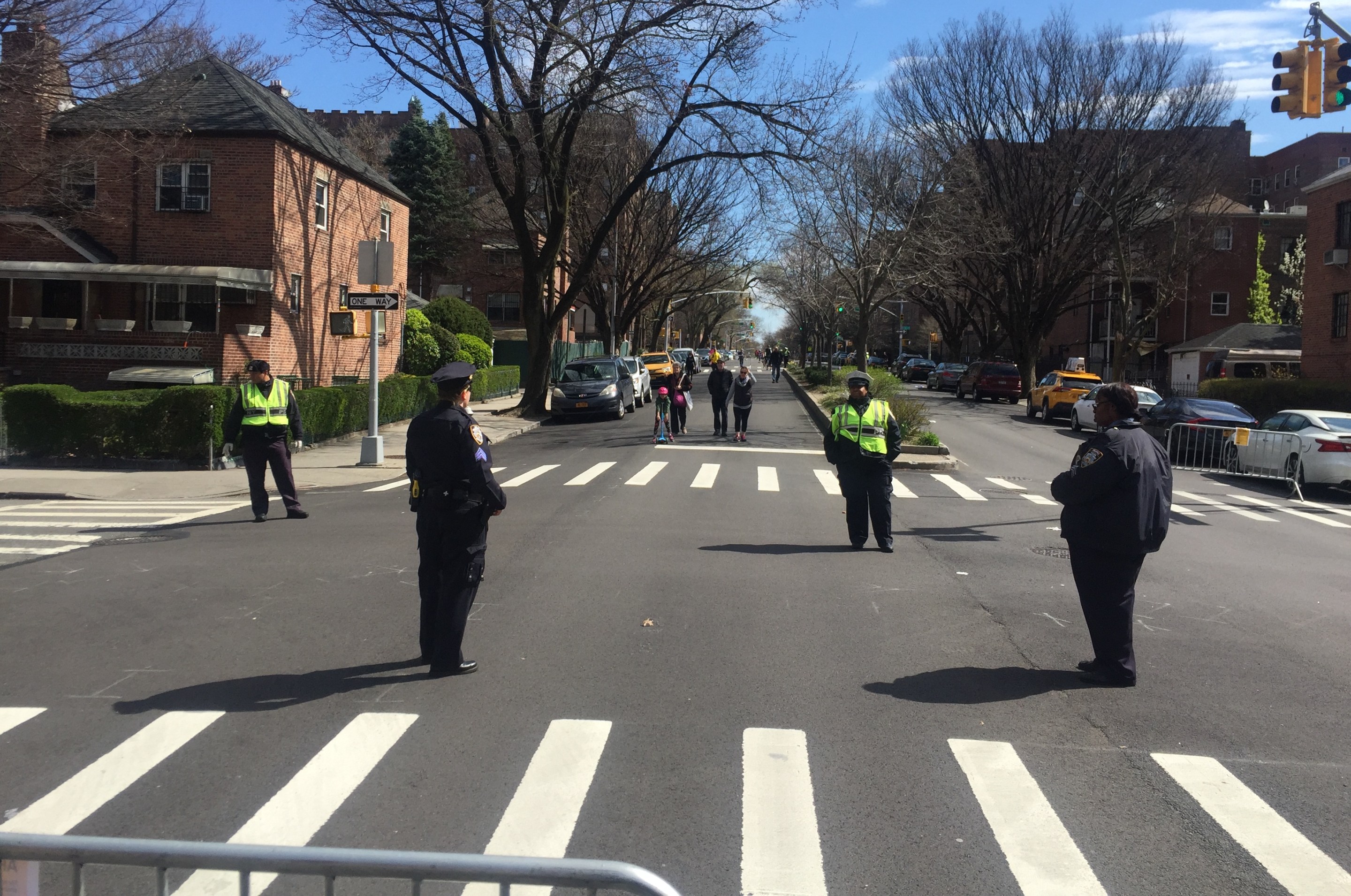Reports are coming in from the first hours of Mayor de Blasio's "open streets" plan — and it's easy to see why the mayor was so reluctant to create more car-free streets so that people could recreate in a socially responsible manner: He believes that police must be heavily deployed to make sure nothing gets out of hand.
That's what Streetsblog correspondents are reporting from three of the four locations — lots of cops standing around. The mayor's insistence on a strong police presence explains why the he probably convinced himself he couldn't do more.
"The Council had a much longer list, but it was shot down by the NYPD," a source in city government told us (two other sources confirmed that). "The whole thing is silly. This didn't need to be such a big deal. Just treat it like a street fair — when you're lucky if a cop shows up at the start and the end to move the sawhorse. I have no idea why they thought they needed so many cops to police this."
On Bushwick Avenue, Streetsblog found NINETEEN cops milling around along the four-block stretch between Johnson and Flushing avenues — enforcing, what exactly? There were few members of the public seeking to recreate or congregate.
One local said he didn't understand the point of so many officers just standing around.
"I don’t think having cops standing there makes anyone feel safer," said Melvin Estrella, who lives on Bushwick Avenue.
Another local who lives in a public housing complex nearby said the number of cops on the ground seemed like overkill, especially because there's less people out in general.
"One or two is fine but they don’t need like 10 of them, there’s no crime going on now," said Jason, who declined to give his last name.
Yet cars and trucks are still allowed to cut through the so-called open street on Bushwick Avenue — at the corner of Boerum Street, where cyclist Devra Freelander was killed by a cement truck last summer, Streetsblog saw one of those very trucks drive down Boerum Street right through the middle of Bushwick Avenue towards Morgan Avenue.
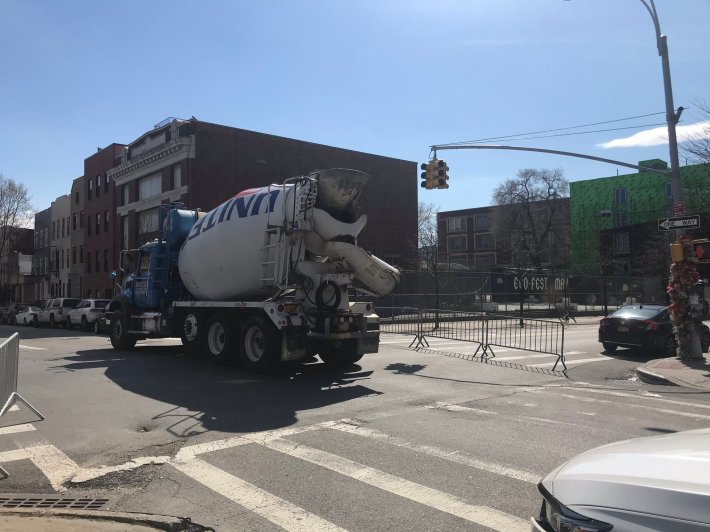
On the short car-free stretch of Park Avenue in Manhattan, there were also 24 cops and several squad cars — parked in the bike lane, of course — and very few members of the public needing to be monitored.
There's also still some confusion in the area because of a quirk in the street design. A building that sits on Park between 33rd Street and 34th Street has an underground parking garage on on the 33rd Street side of it. A jersey barrier between the north and south lanes of Park Avenue prevents drivers from moving west on 33rd, forcing them to either turn right on to Park or into the Park Avenue tunnel, which is currently closed because of construction work. The closed tunnel combined with a police barricade at 33rd and Lexington means that drivers exiting the garage can only turn onto the supposedly car-free Park Avenue.
The traffic setup meant that when Streetsblog witnessed a driver coming up Park from 33rd Street, a police officer at 34th Street had no choice but to let her through the barricade on 34th and continue driving down Park Avenue after telling him she had just exited the parking garage and there was no other way out. The driver of the car told the police officer on the scene that no one in the garage had told her about the street closures. After waving the woman through, the officer told Streetsblog that police hadn't been told about the parking garage, and that the protocol for dealing with drivers who wound up on the car-free street was to get them off the street as quickly and as safely as possible.
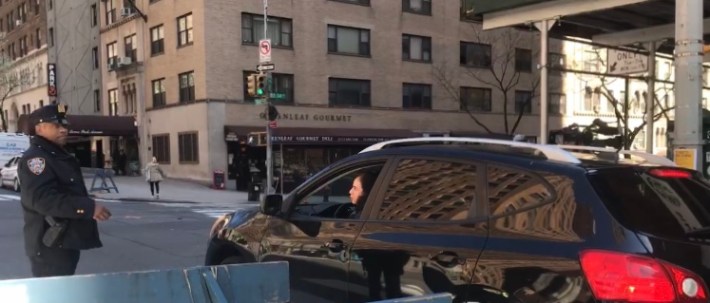
On 34th Avenue in Queens, one Streetsblog tipster said, "It's completely disgusting how many cops there are here. I don't want this here." (Pictures of each are below, with more of this story below).
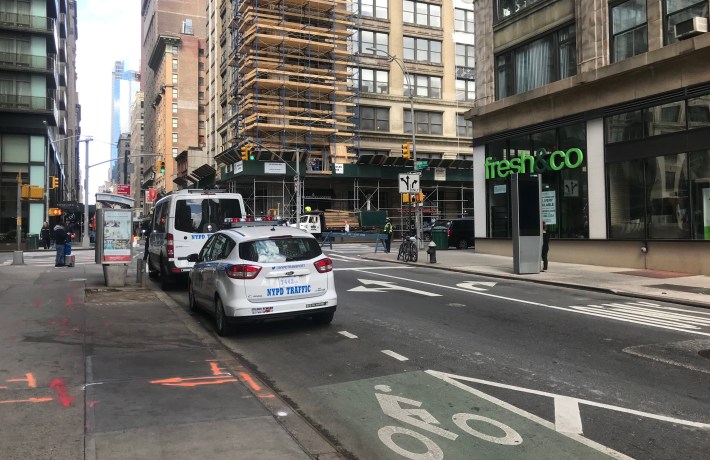

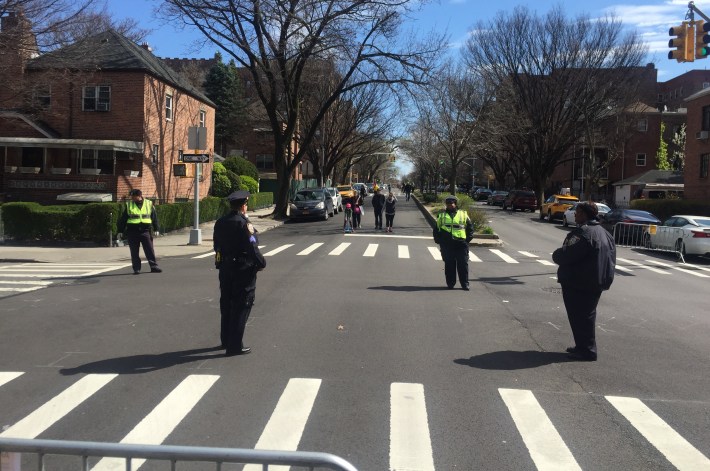
The massive police presence certainly follows everything the mayor has said up to this point, since Gov. Cuomo on Sunday ordered him to open up some streets so that New Yorkers could keep away from each other during the coronavirus crisis.
On the Brian Lehrer show this morning, the mayor said he wanted to "create a new place for people to congregate," but did not want to do it without enough enforcement because "what I’d hate to see is we think we’re solving a problem and we’re creating a brand new problem of a place for people to hang out that doesn’t have a police officer or a parks officer to keep people separated."
That philosophy has been on display during the city's "Summer Streets" program, which has never been expanded beyond three summer weekends because of the massive policing that the mayor believes the event requires. Streetsblog has long editorialized against the mayor's narrow (and illogical) world-view that a massive show of police is necessary to maintain order when streets are closed to car traffic.
Many believe that what we're seeing on the streets is Mayor de Blasio's worldview on open space coming into full view:
And others were still pointing out that the overall "open-streets" plan is tiny, frustrated that there's only one few-block stretch in all of Brooklyn.
So should southern brooklynites travel all the way there @NYCMayor @NYCSpeakerCoJo? Makes no sense that there is 2.5+ mil people in Bklyn & there are no open streets for the majority of Brooklynites. We don’t need police, we need barriers. The boardwalk here isn’t enough space
— Coney Isle Guy (@ConeyIsleGuy85) March 27, 2020
